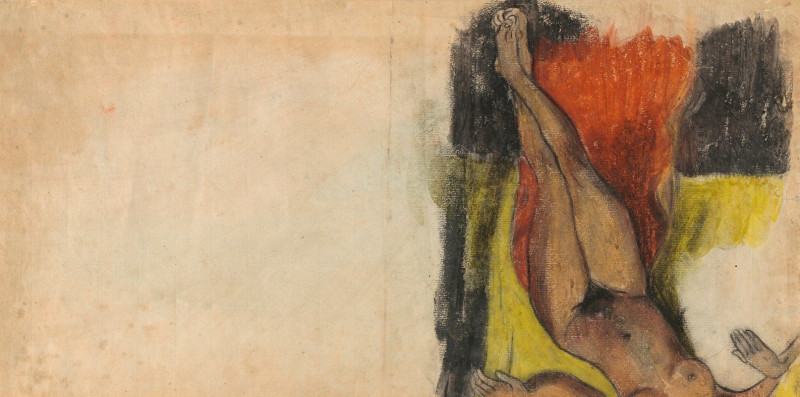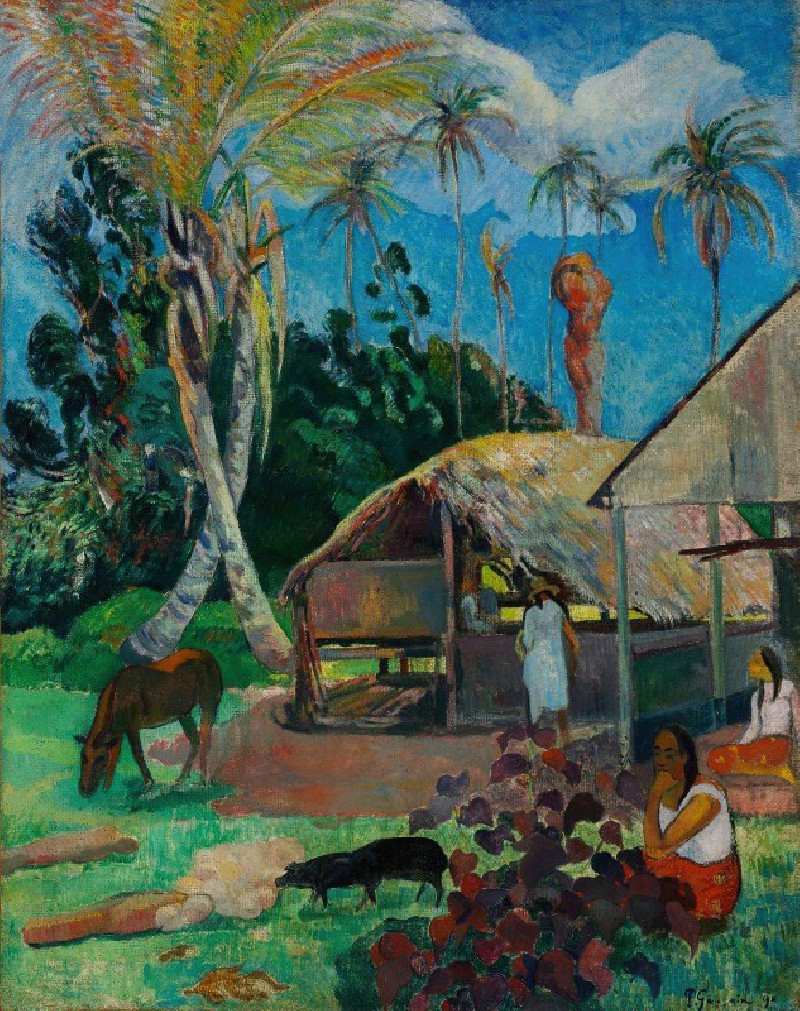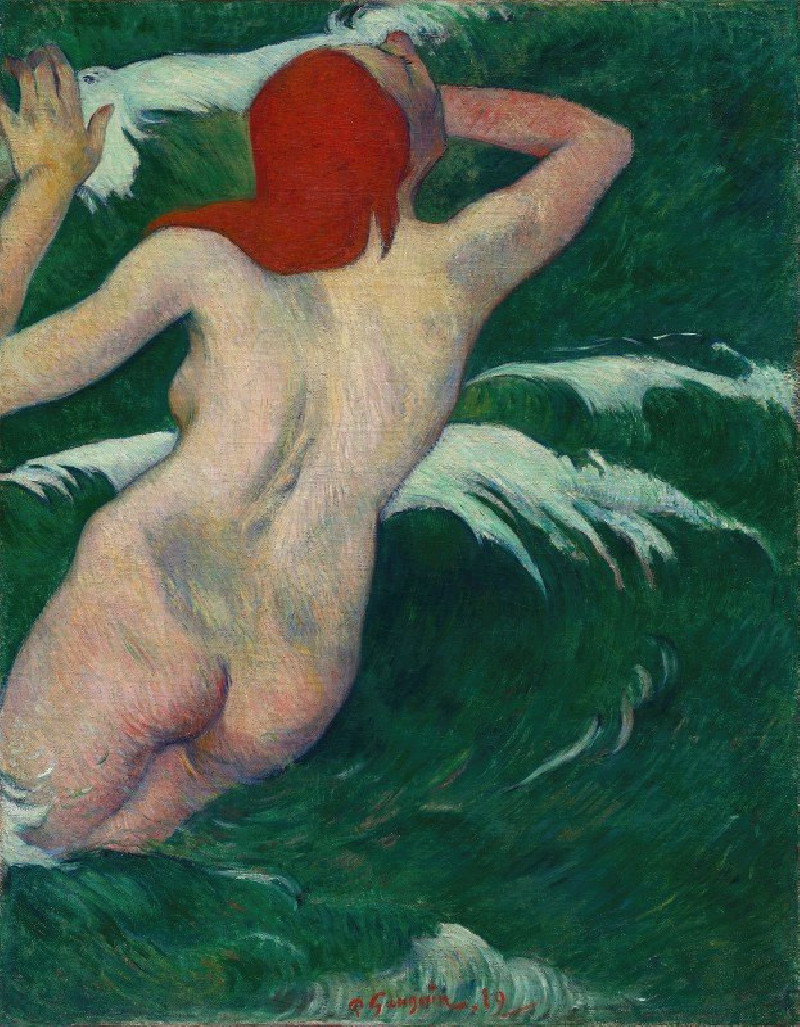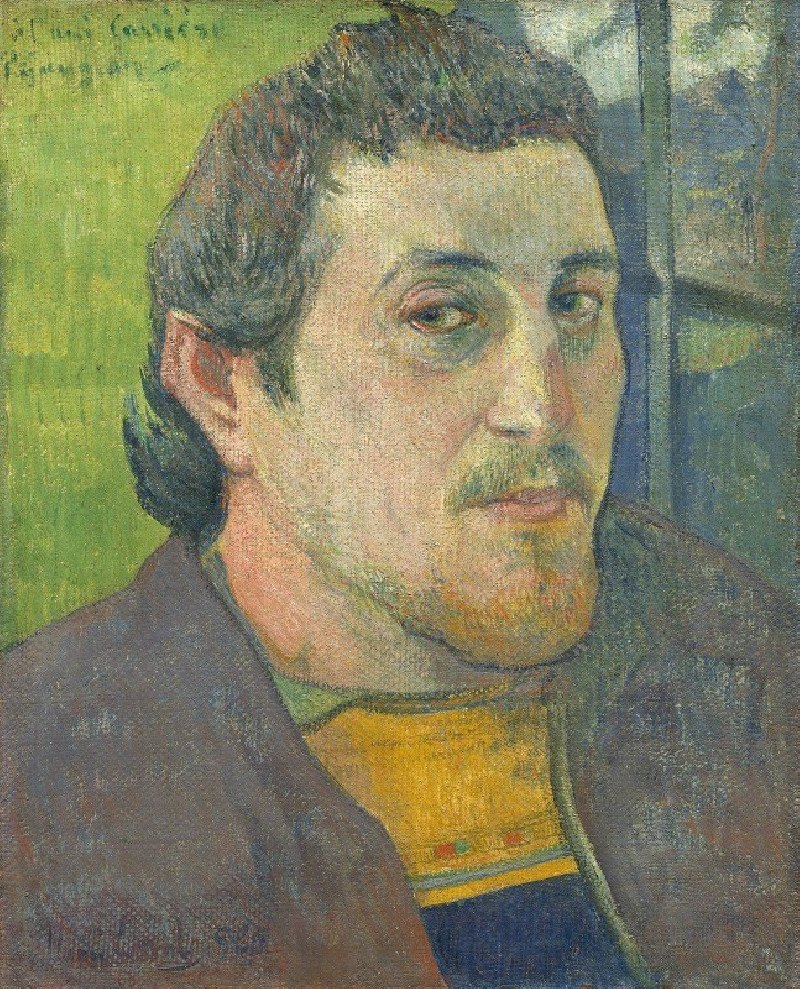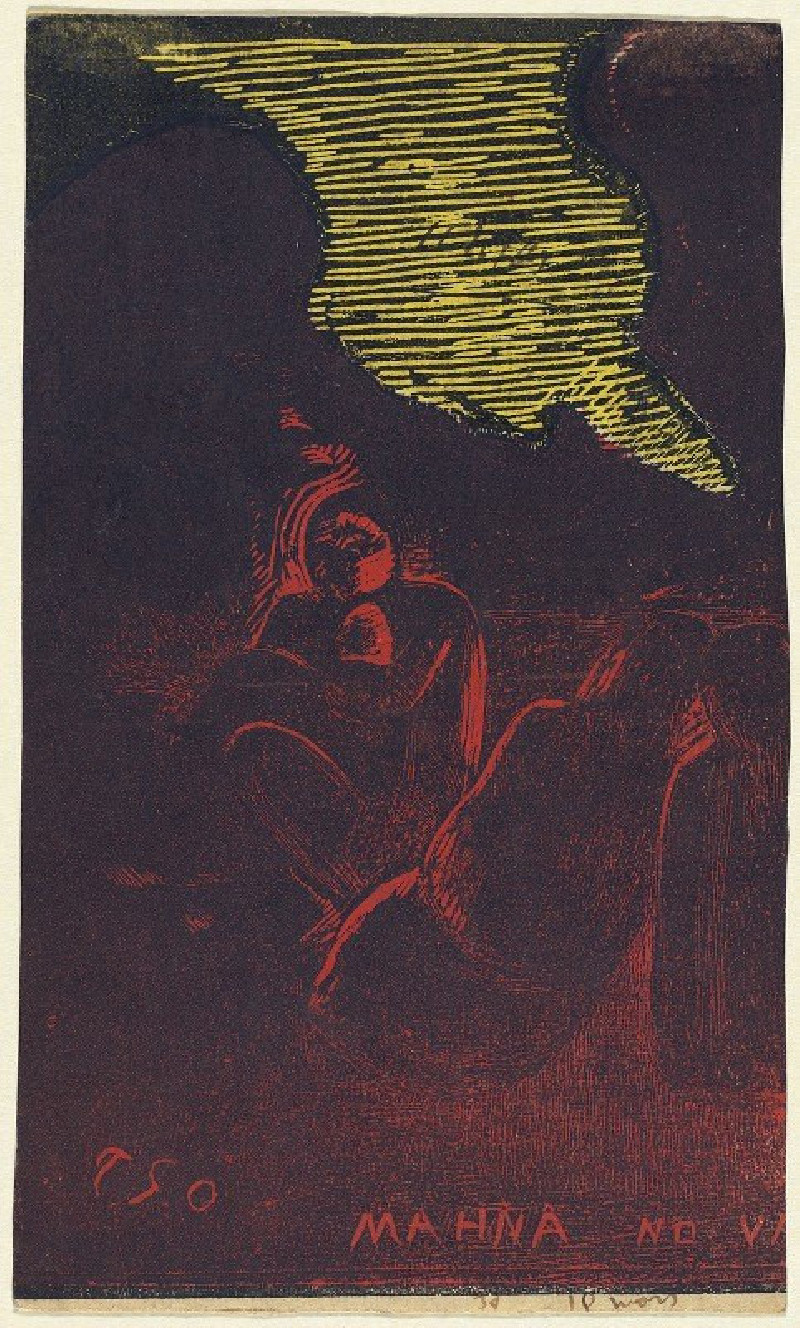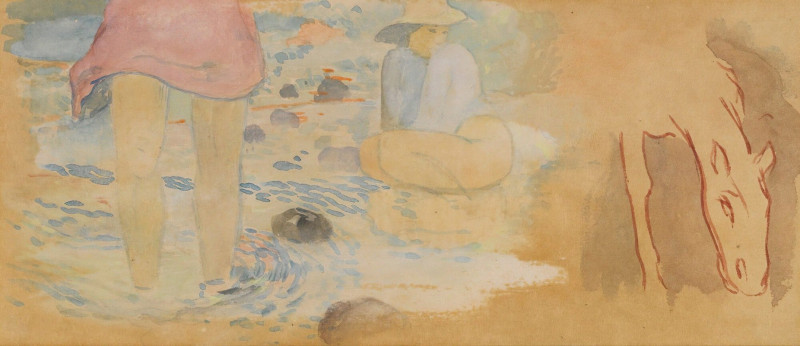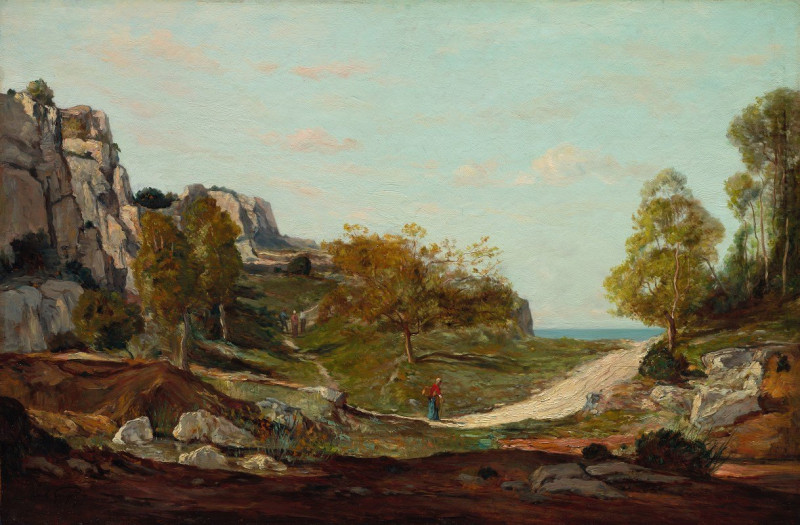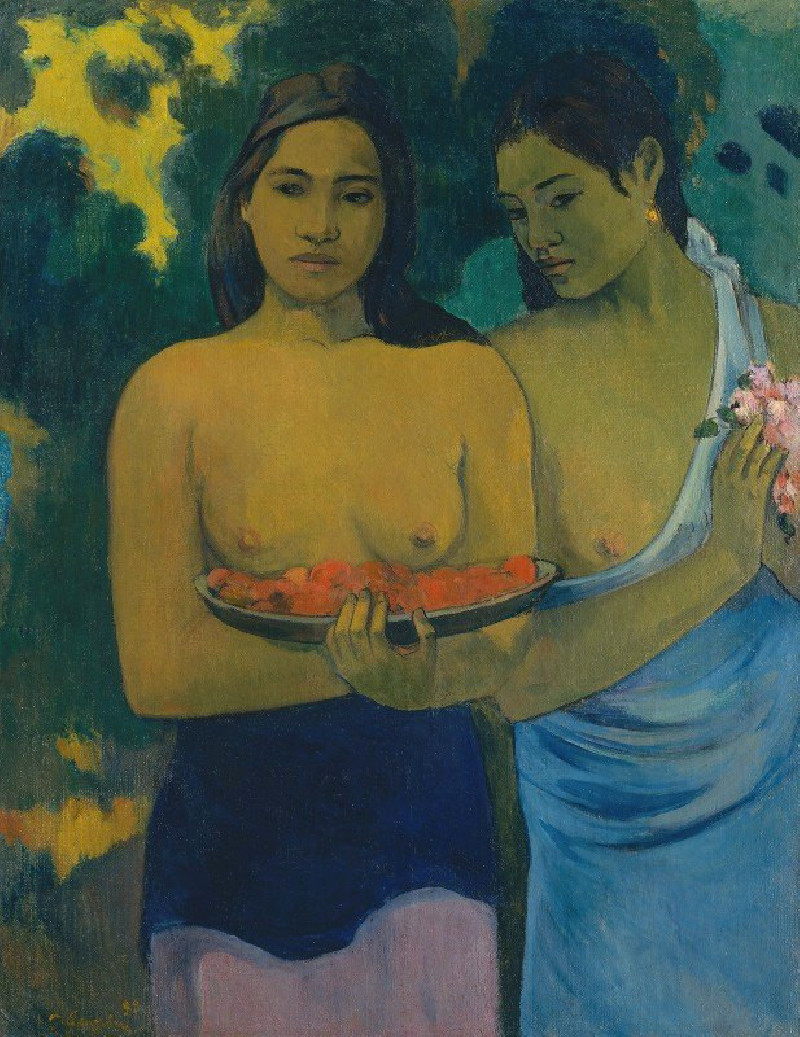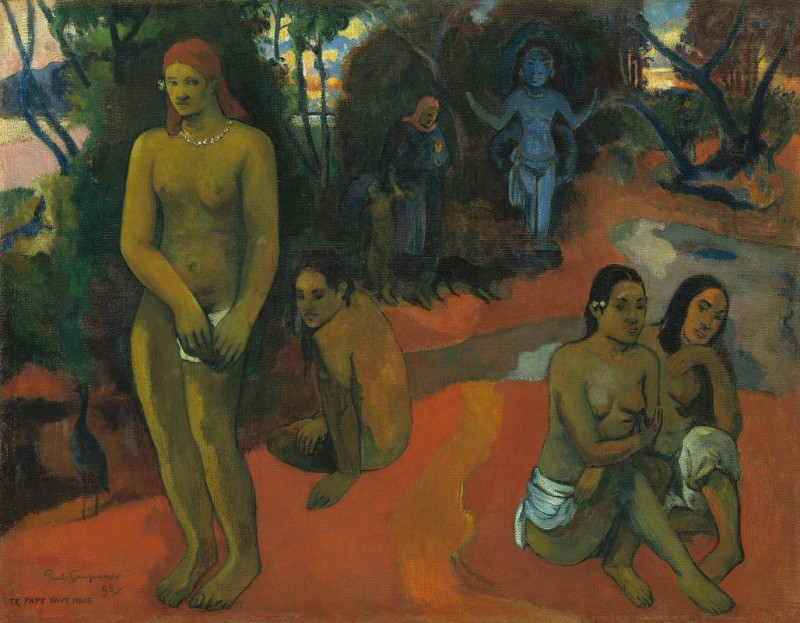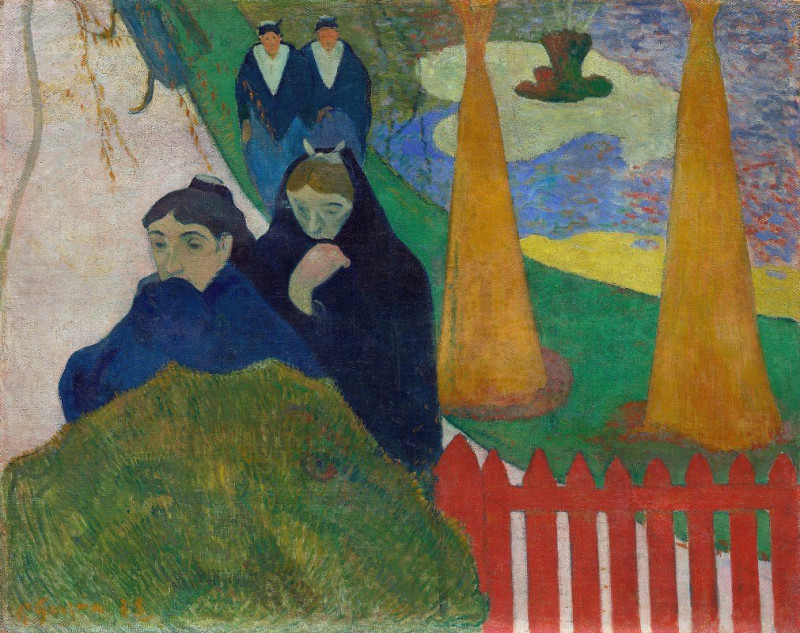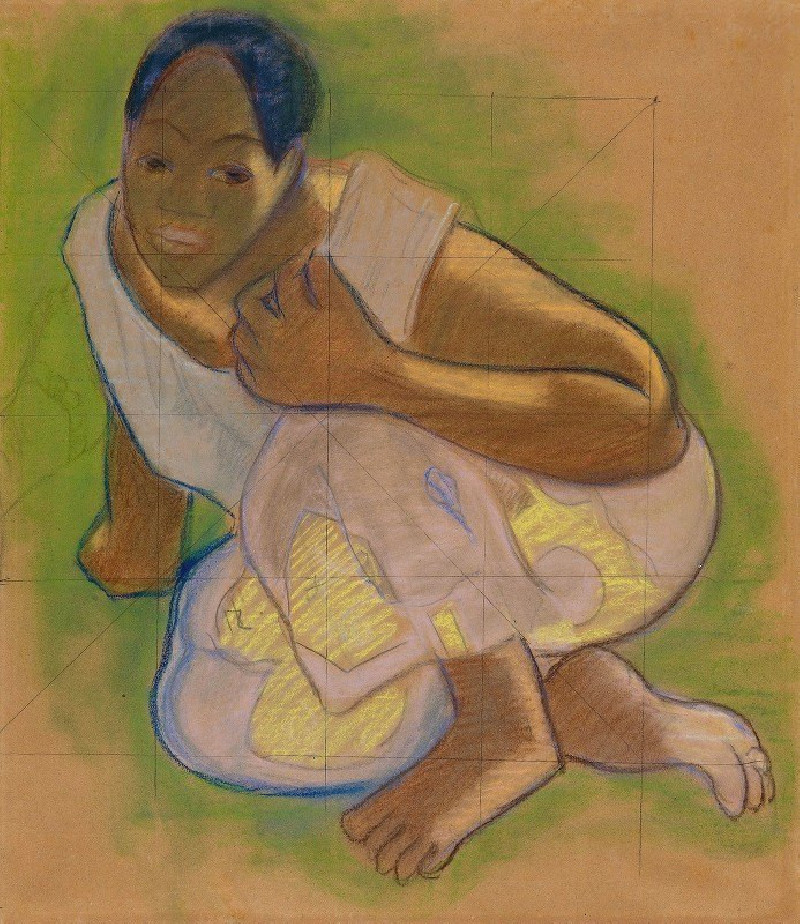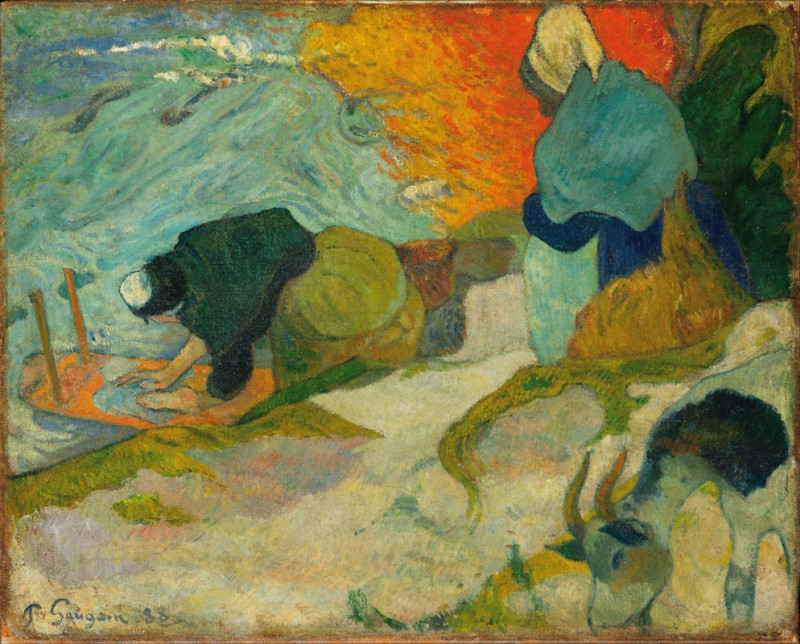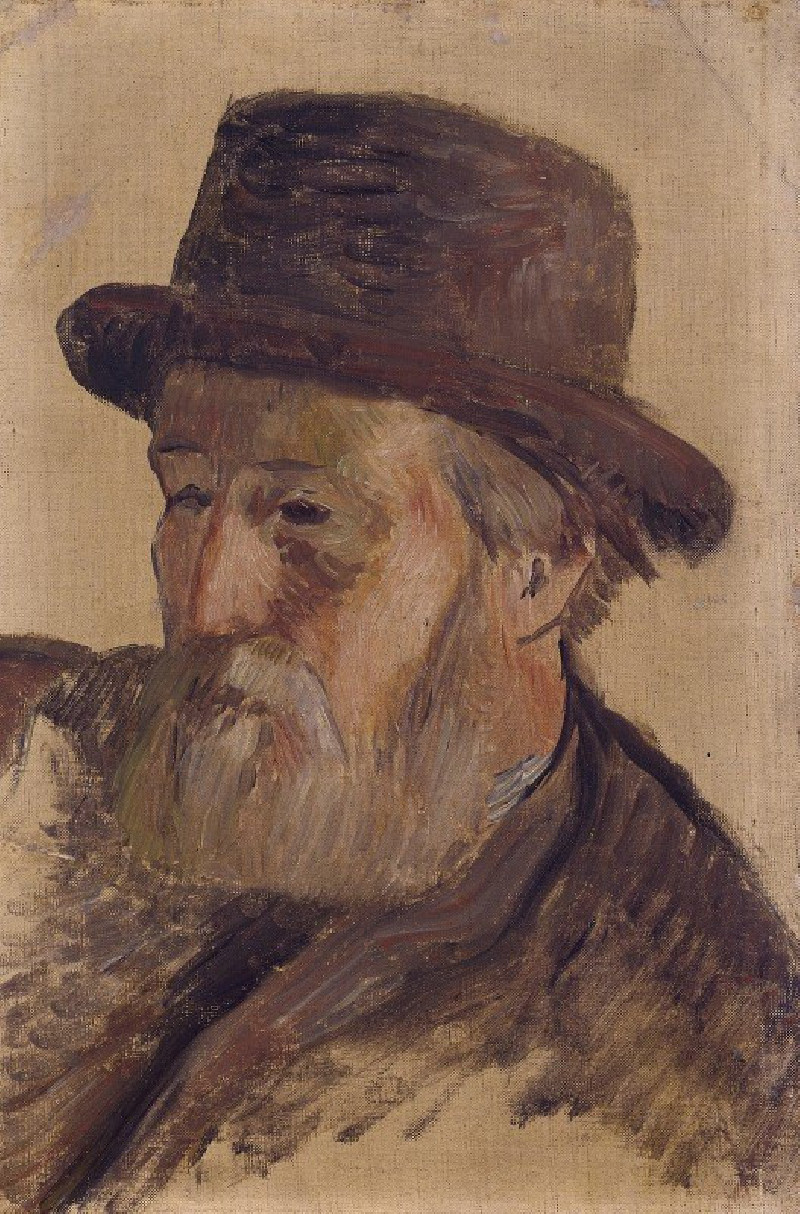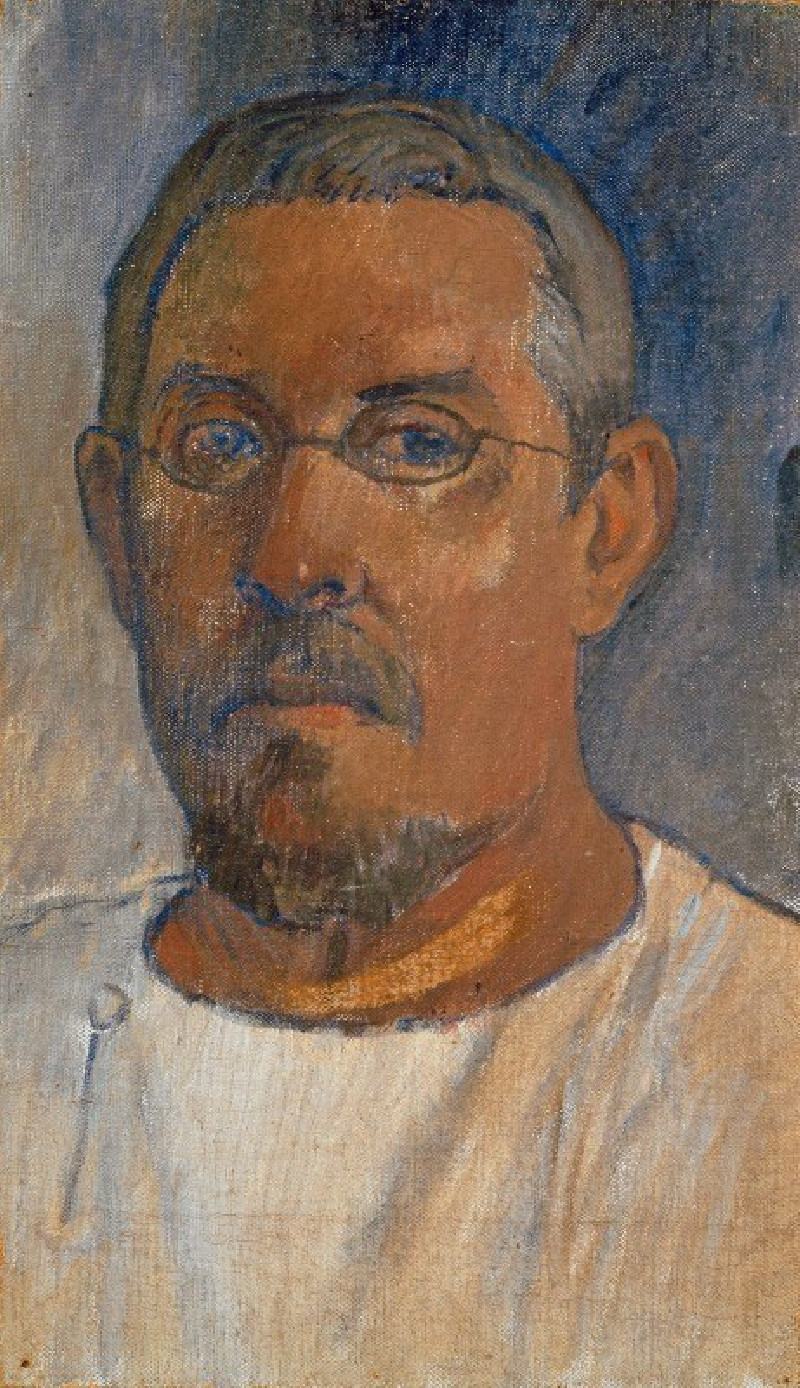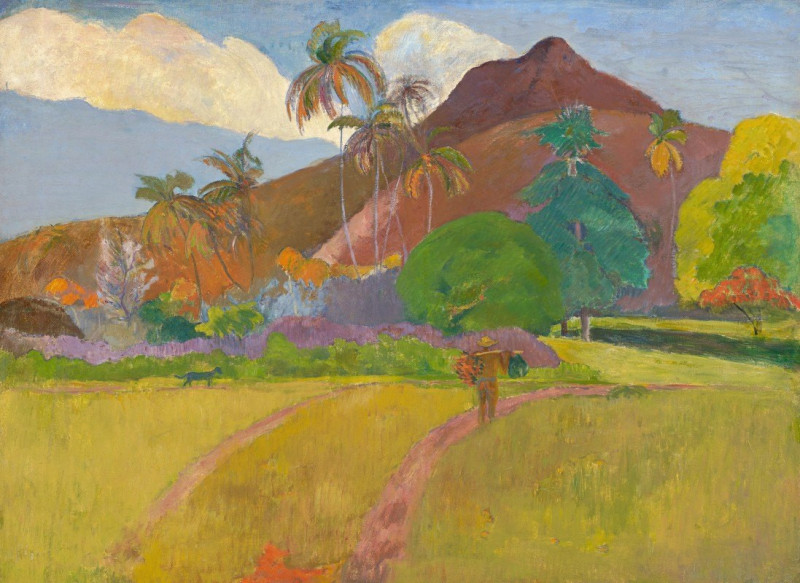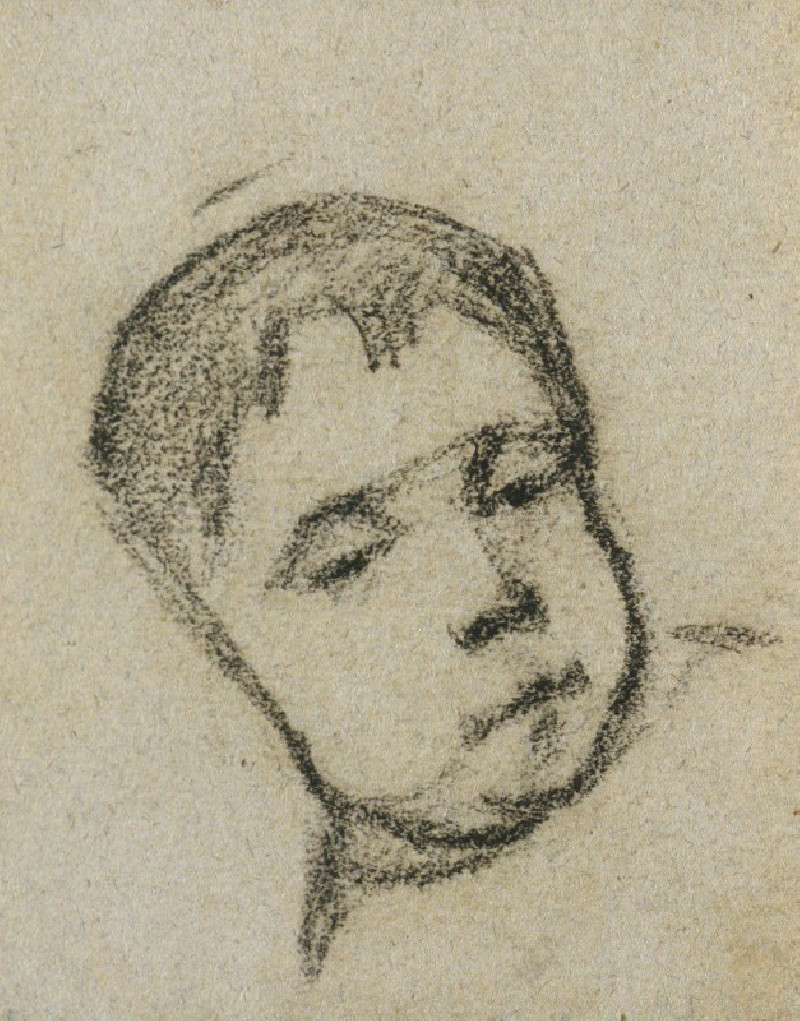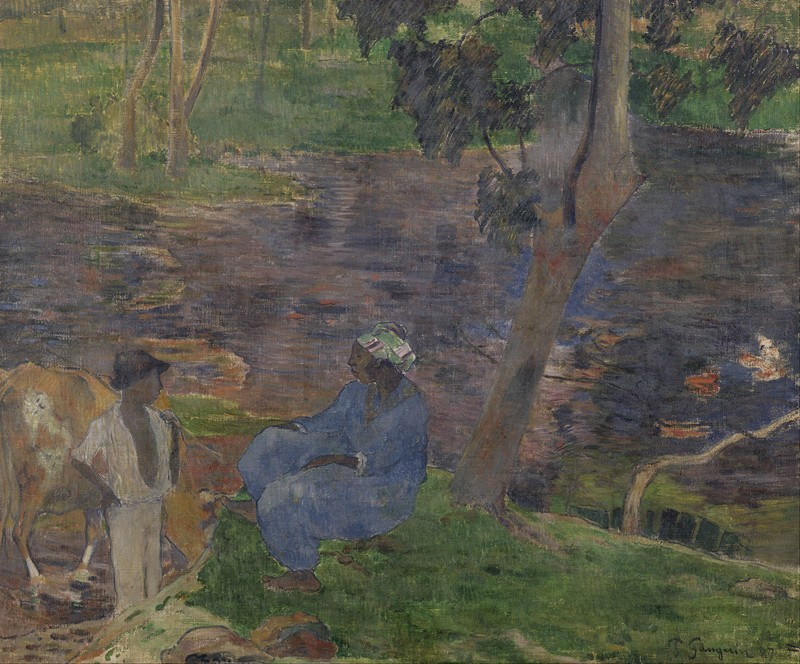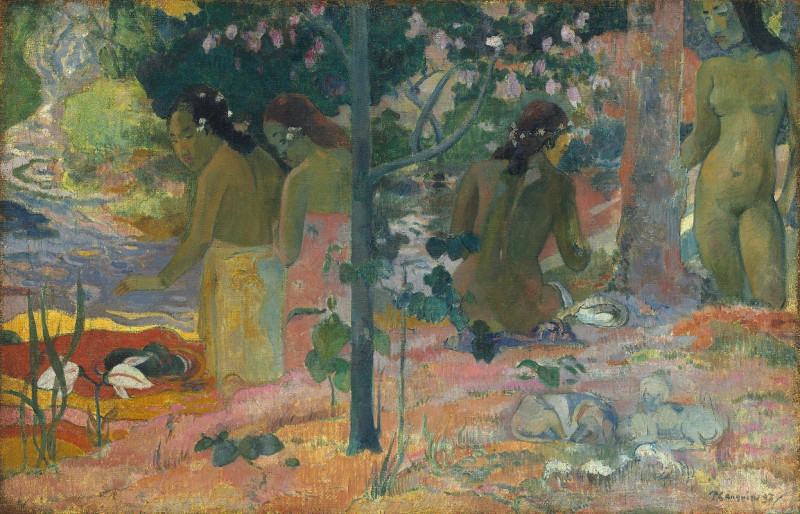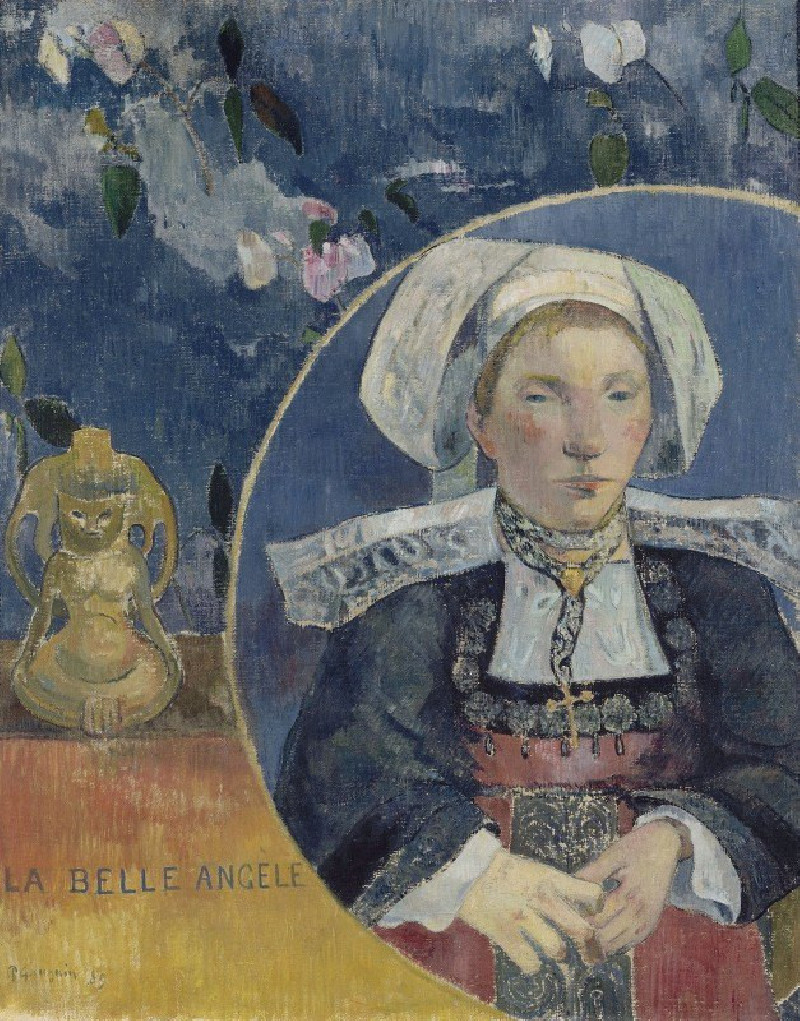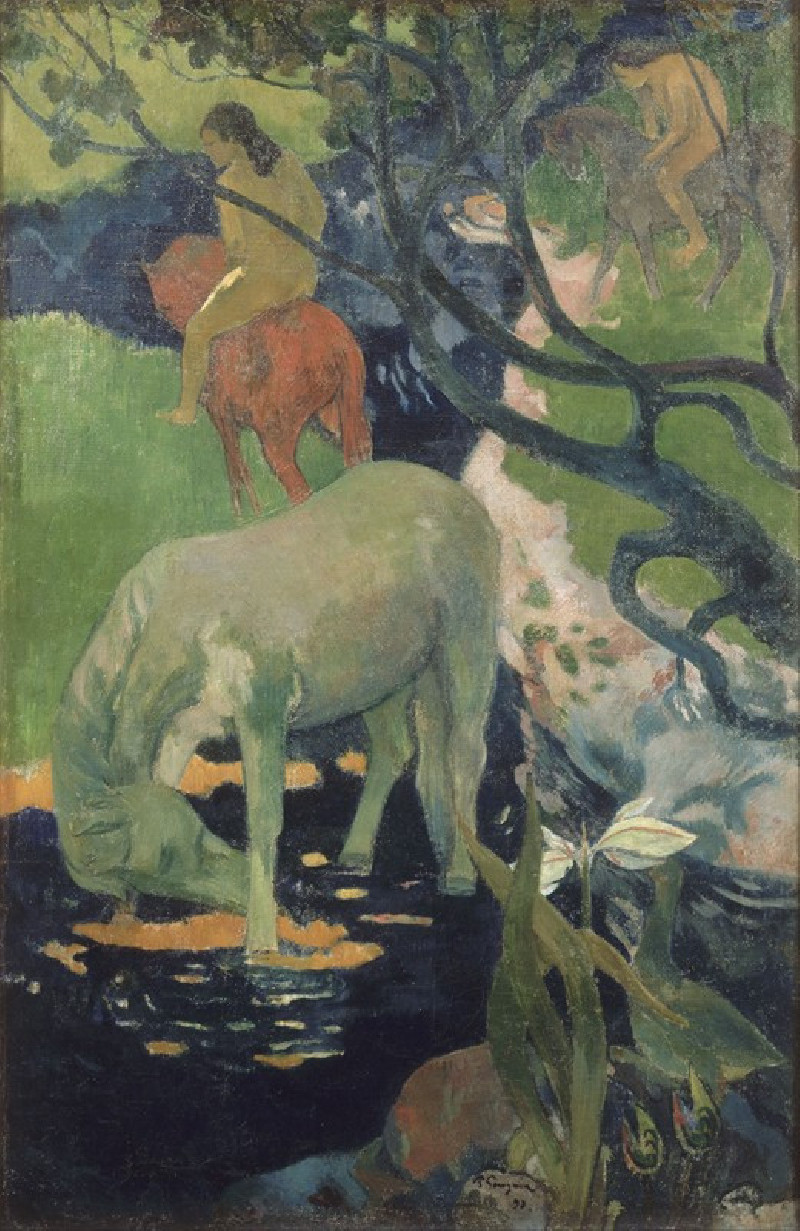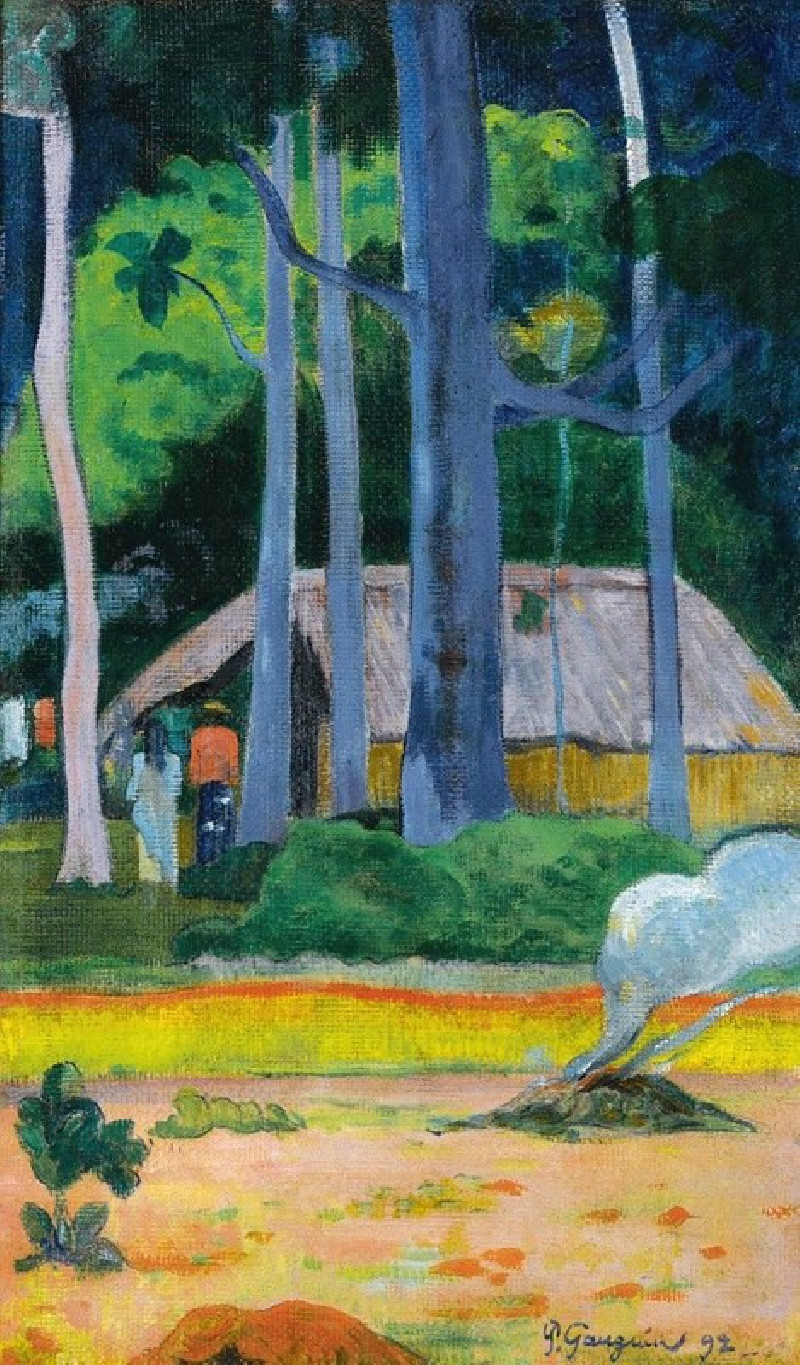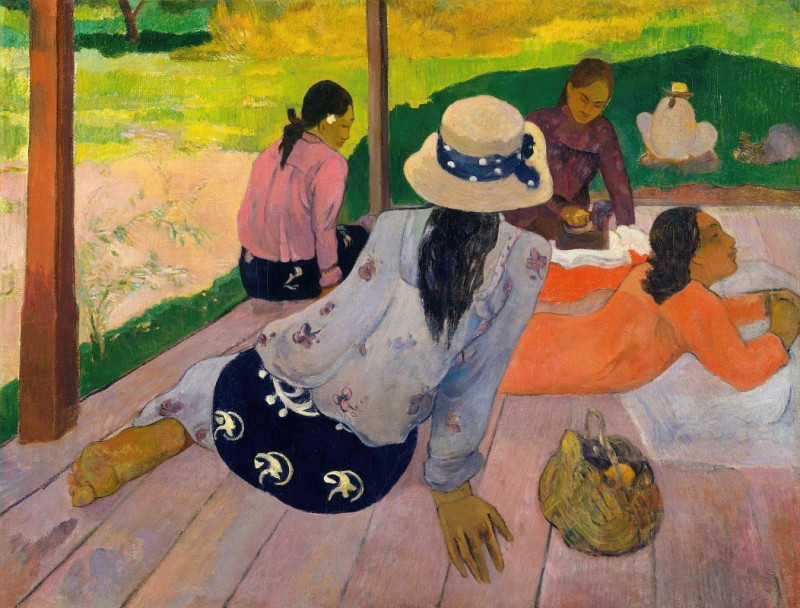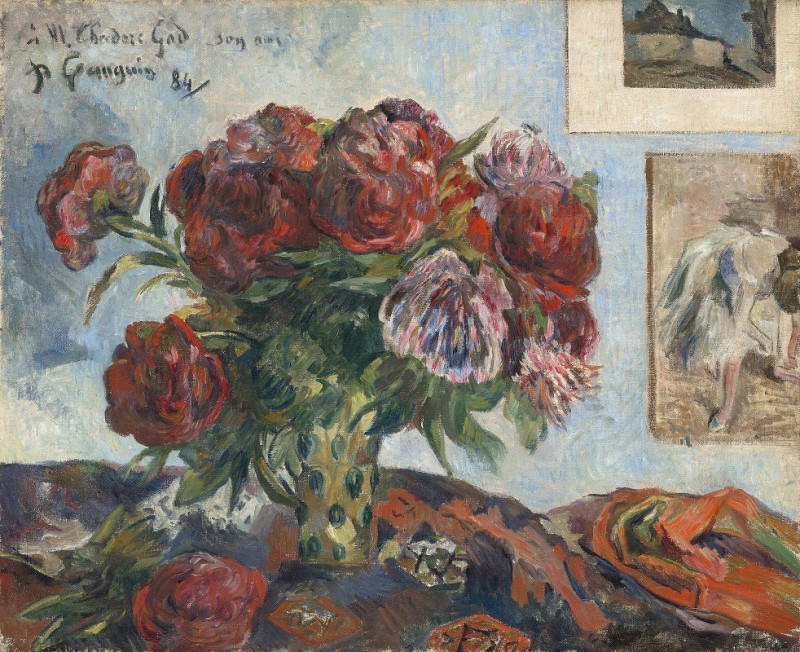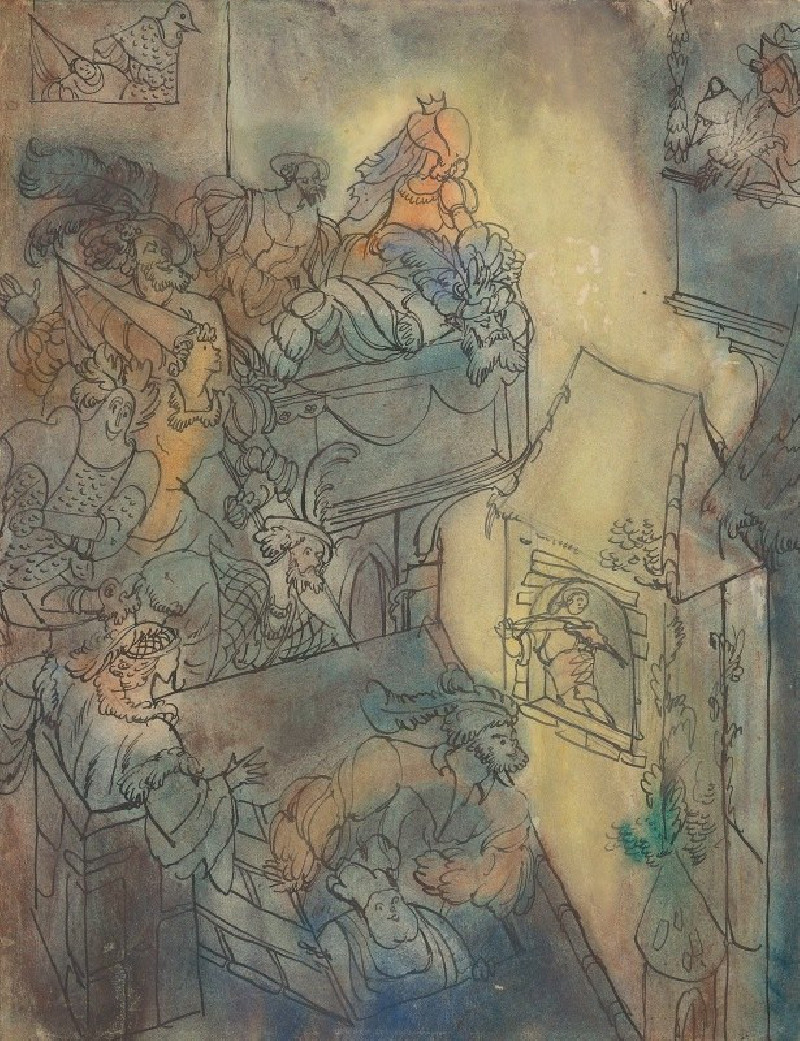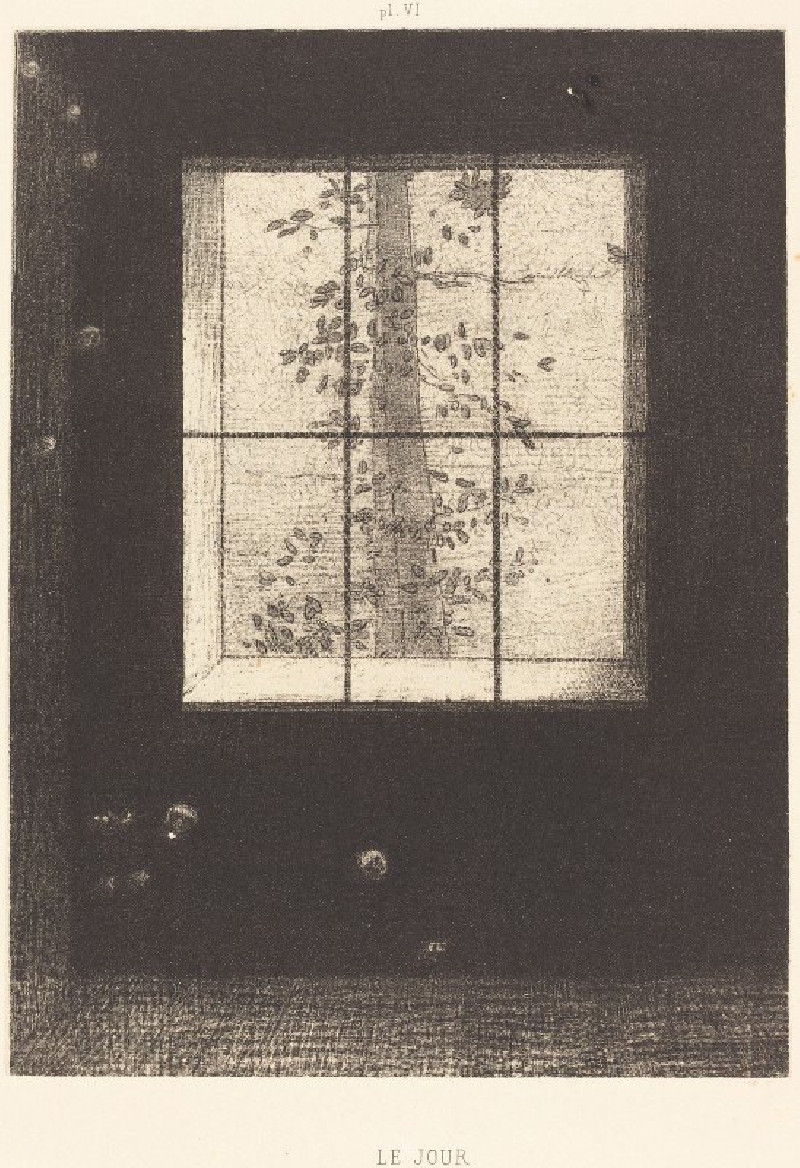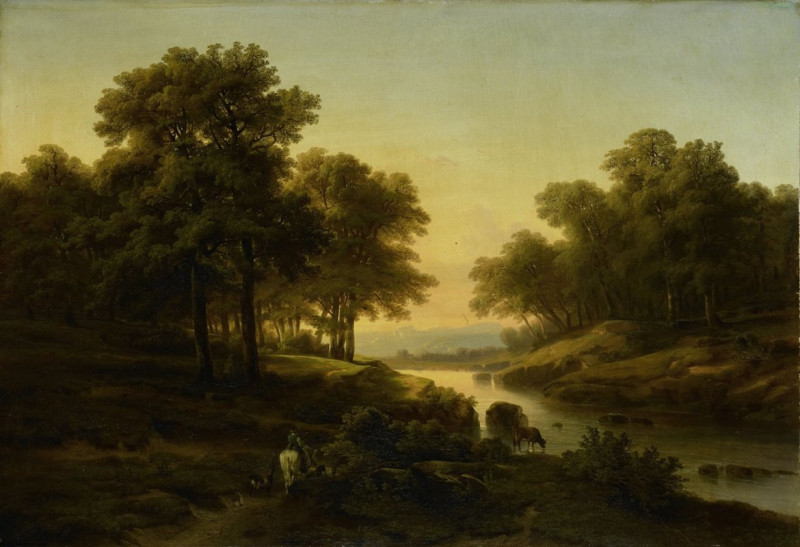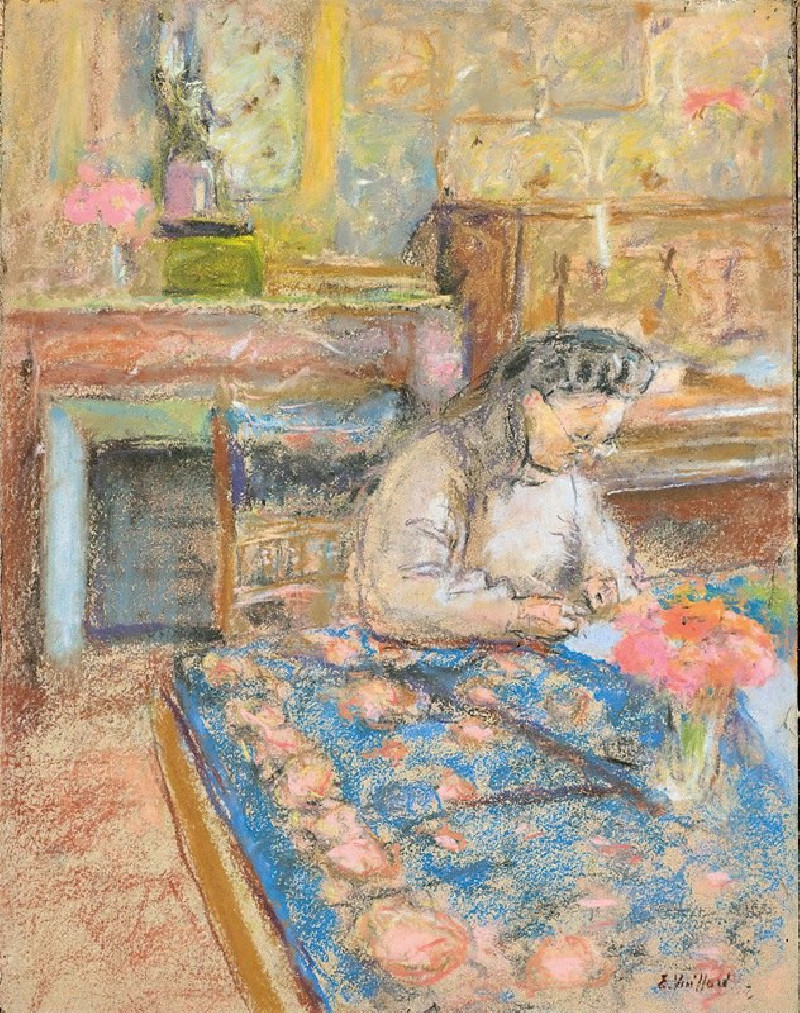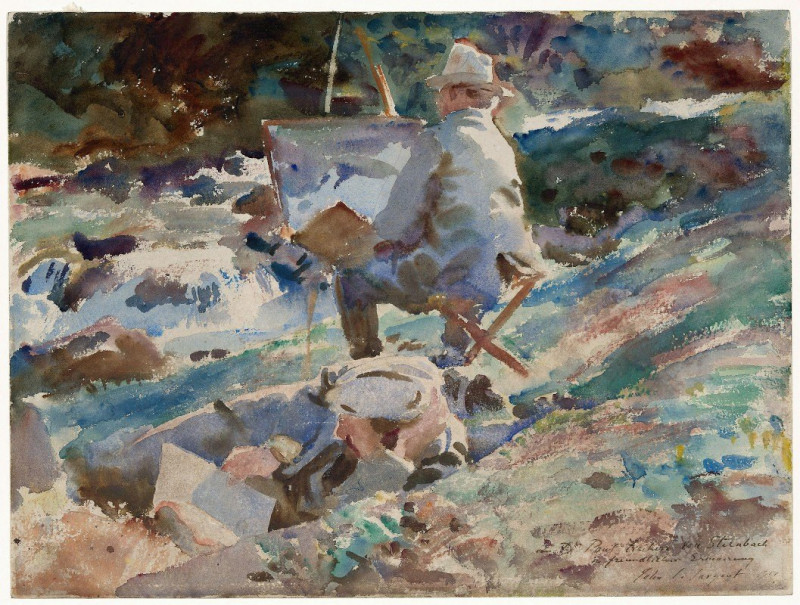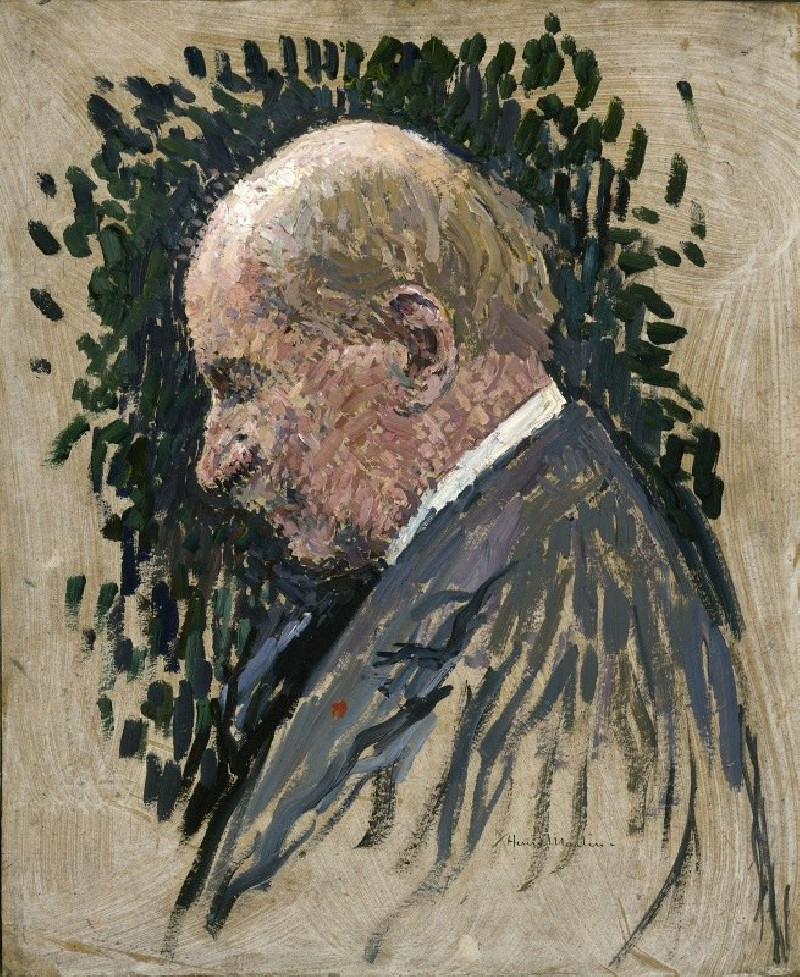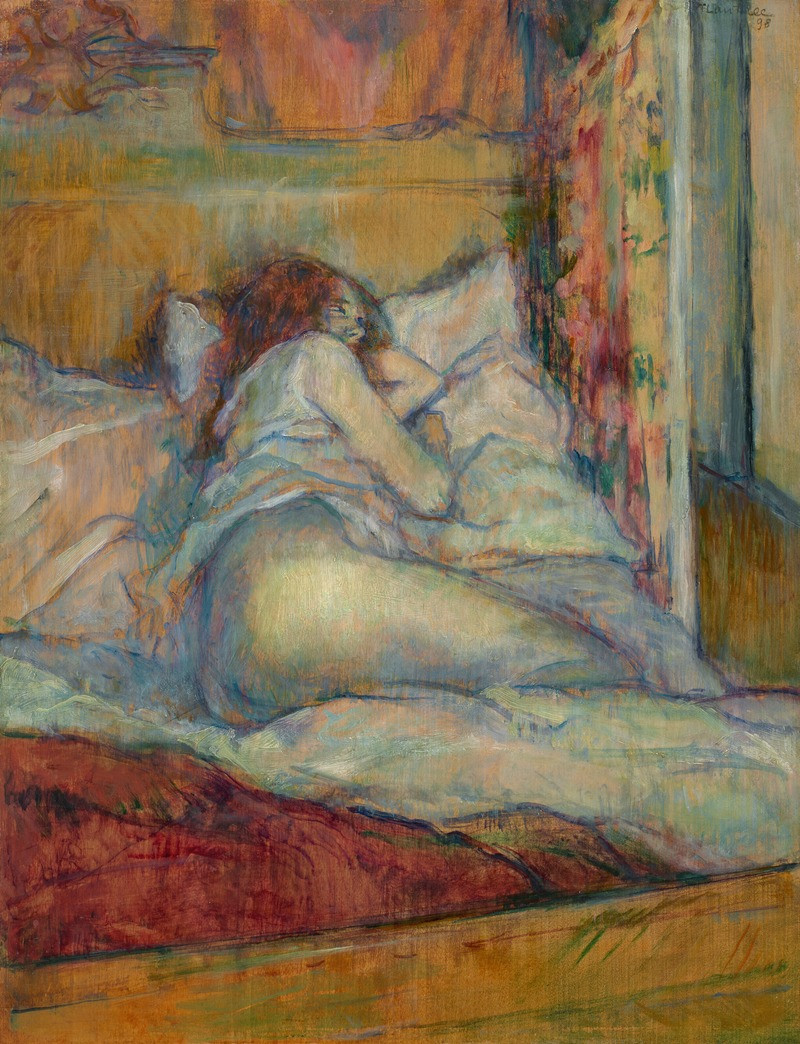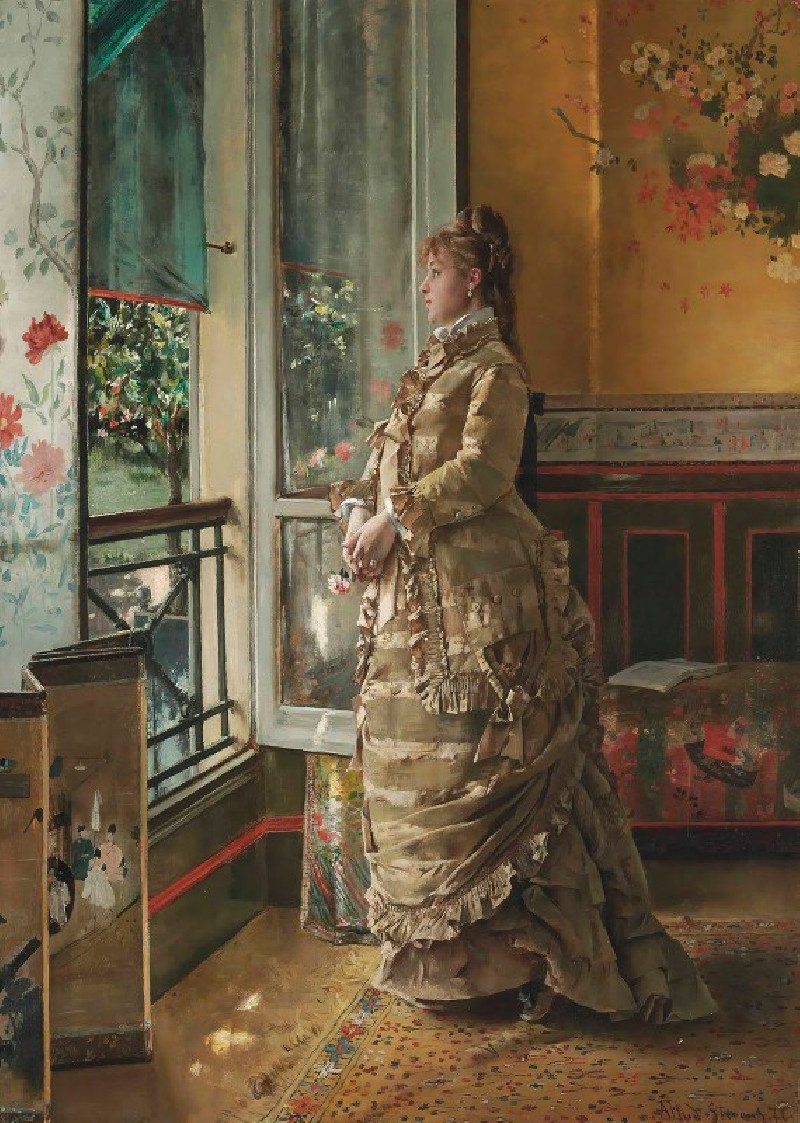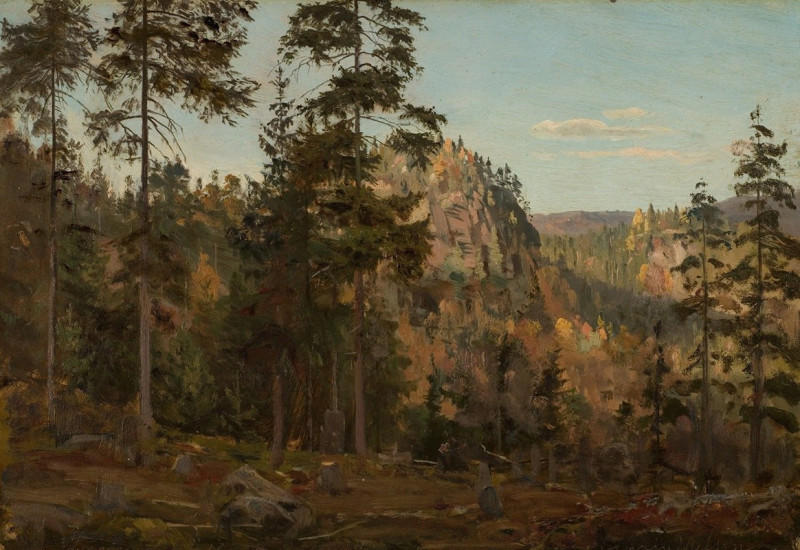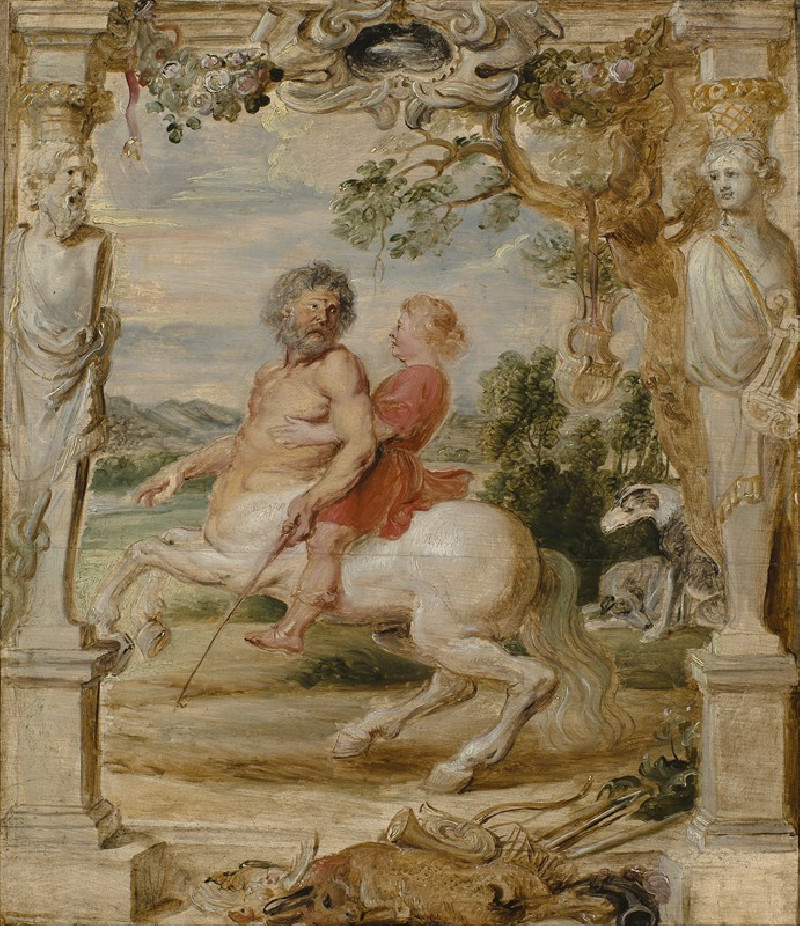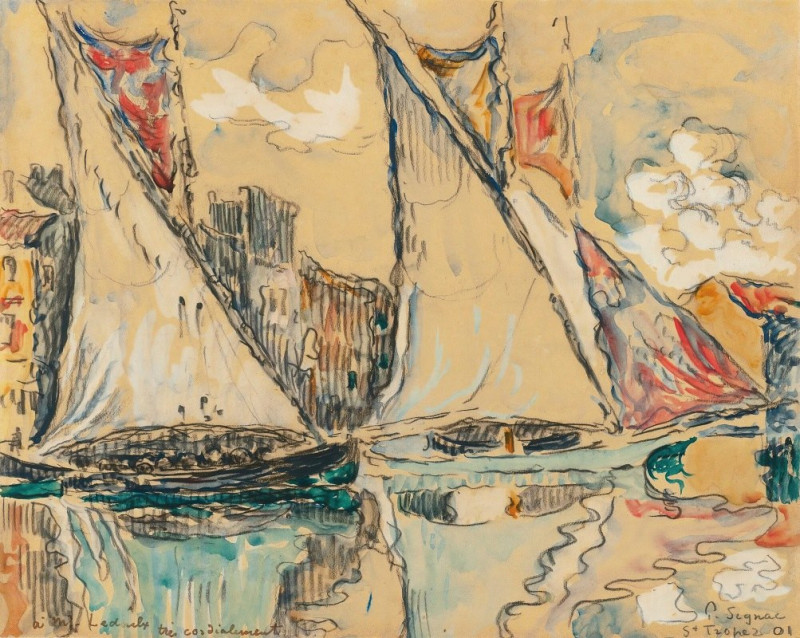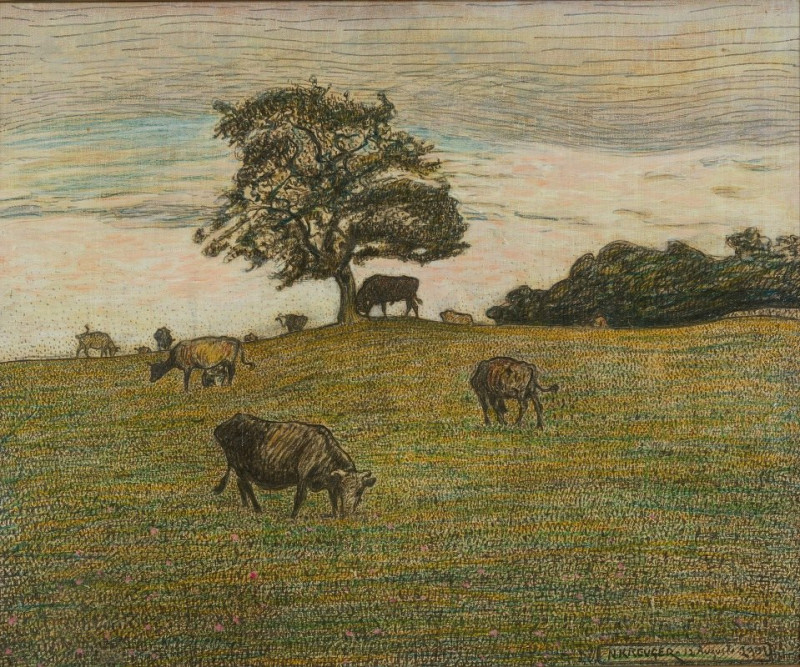Study for Aita tamari vahine Judith te parari II
Technique: Giclée quality print
Recommended by our customers
More about this artwork
In the artwork titled "Study for Aita tamari vahine Judith te parari II" by the celebrated French post-Impressionist artist Paul Gauguin, viewers are drawn into a vibrant and emotion-filled scene framed by the distinctive, bold contours and saturated colors that define Gauguin's later works. This particular piece features a figure that embodies the raw, unfiltered expression of human emotion.The subject portrayed is a woman depicted in a dramatic pose, with her arms raised above her head, clutching her dark, flowing hair. This gesture may suggest a moment of profound emotion or deep introspection. The woman's figure is rendered with warm, earthy tones against a stark background, hinting perhaps at the natural beauty and somber mood of Tahiti, where Gauguin spent many years of his life and which significantly influenced his artistic style.The use of color in this study is especially noteworthy; the fiery oranges and reds of the figure's upper body contrast dramatically with the muted yellows and greens of her lower garments, emphasizing the emotional intensity of the pose. The background retains a minimalist approach, primarily unpainted, which further focuses the viewer's attention on the central figure.This study not only showcases Gauguin's mastery in portraying the human form and his iconic use of vivid color but also provides insight into his method of working, often refining compositions in studies before executing his final works. Such pieces offer a window into Gauguin’s process and his continuous quest to capture the essence of his subjects, their cultural context, and his own personal reflections on life and nature.This artwork is an invitation to explore the depths of human emotion and the artist's profound connection with the landscapes and peoples that inspired much of his work.
Delivery
Returns
Eugène Henri Paul Gauguin was a French Post-Impressionist artist. Unappreciated until after his death, Gauguin is now recognized for his experimental use of color and Synthetist style that were distinct from Impressionism. Toward the end of his life, he spent ten years in French Polynesia. The paintings from this time depict people or landscapes from that region.

